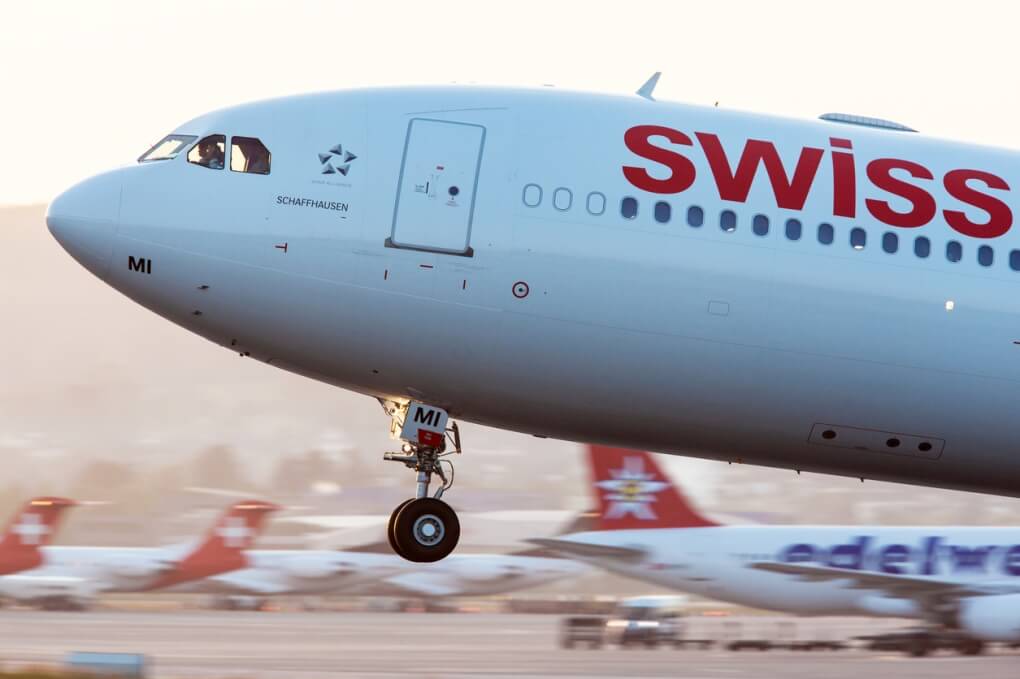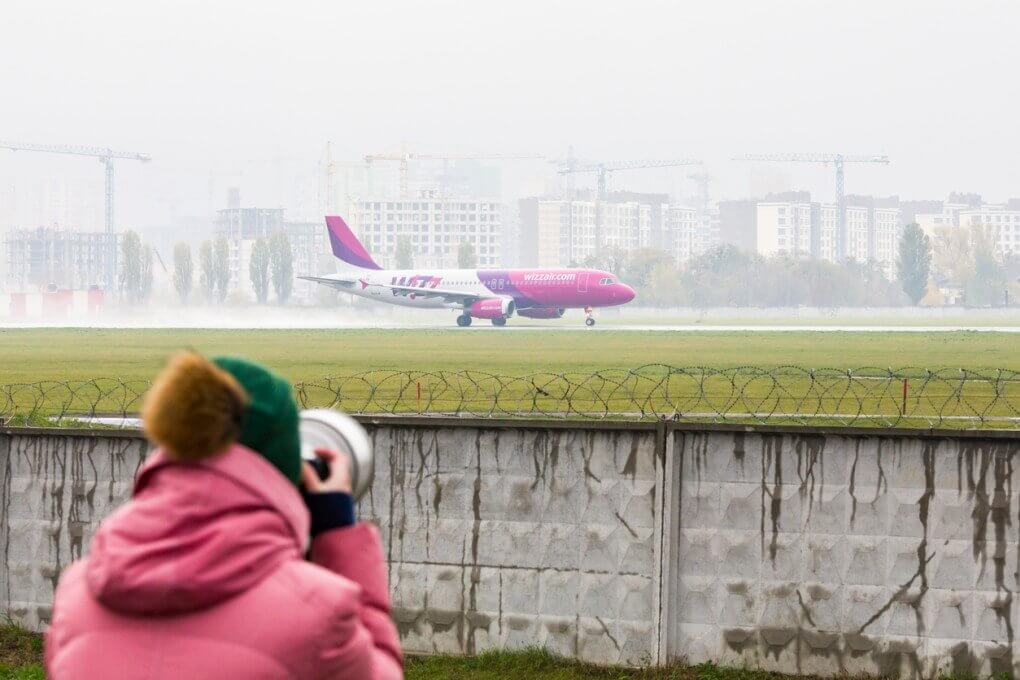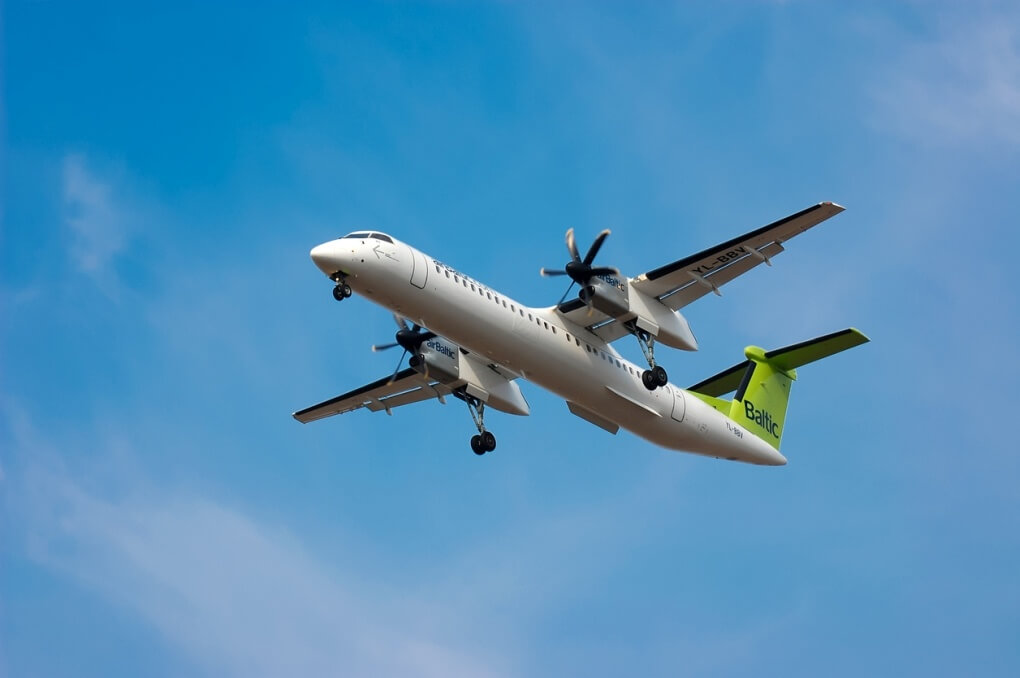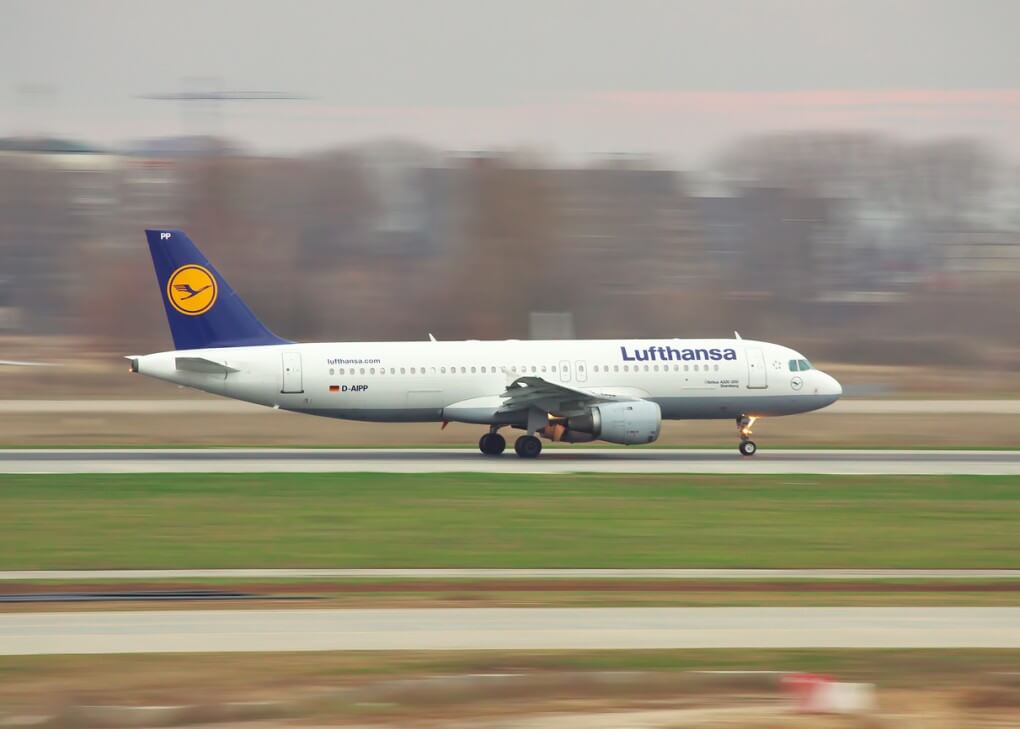
Planespotting – The right way to take photos of planes
The fascination of capturing the giants of the skies in impressive shots is called planespotting. Similar to sports photography, the challenge of planespotting lies in taking pictures of the rapid aircraft in motion. To achieve this, however, a few things must be done.
We’ll tell you what you should keep in mind when photographing airplanes, what weather and camera settings are recommended, and which apps will help you find airplanes in your area.
Recommended camera equipment for aircraft photography
You should use a system camera (DSLRs or DSLM) and a long focal length lens for planespotting. In some cases, bridge cameras may also be useful. However, they must have a particularly good zoom capability. Cameras with an APS-C sensor are well suited for this kind of photography due to the smaller image detail. In direct comparison to cameras with a full format sensor, the APS-C sensor displays the aircraft larger.
You won’t be able to avoid the use of telephoto lenses when planespotting. The airplanes are usually far away and there is only a limited possibility to approach them. Lenses with a focal length range of 55 – 250 mm already offer a good start. It is also beneficial if your lens has a built-in image stabiliser. In photography at higher focal lengths, blurring occurs even with slight shaking.

Preparation – Scouting airports
Airports offer different possibilities for planespotting. Some have their own areas for aircraft enthusiasts and plane-spotters, while others may have a hill next to the airport site from which you have a particularly good view of your subject. If you are planning to take your photo at a certain airport, it is worthwhile to inform yourself about the local conditions in good time. You can contact the airport itself or look at the relevant planespotter forums where photographers exchange tips and information. Some airports even offer special planespotter tours of the airport grounds, where photographers are taken to particularly good spots.
Special care is required with planespotting outside of Europe. In some countries, planespotting at the airport is a criminal offence. Therefore, you should find out in advance whether planespotting is permitted at all at the location of your choice.
The best wheather conditions for planespotting
Varying wheather brings fresh wind into your photos. Clear blue skies with bight sunshine or clouds and rain – Impressive shots of planes can be achieved in nearly any wheather at all. Exceptions are thick layers of fog that block the view to the airplane.
Use the weather to your advantage and include it in your shots. When it rains, reflections may appear on the airplane or the runway, which can be beautifully incorporated into the image. Spray dripping off the airplane gives your pictures even more authenticity. Nevertheless, you should protect your camera from external weather influences. Despite splash water protection, the camera may otherwise be damaged during longer periods of rain.
Avoid photographing airplanes in strong midday sun. This will make the aircraft more evenly illuminated and prevent hard shadows from forming on the aircraft. In any case, make sure that you do not photograph against the sunlight.

Camera settings for photographing airplanes
Beginners and professionals alike appreciate the comfort of the automatic aperture and aperture control. With automatic aperture control (S or TV mode), you select a value for the exposure time. The appropriate aperture is then automatically selected by the camera depending on the ISO value used. In Aperture Priority, it is the same. You select an aperture value and the exposure time is determined automatically.
You should use your camera’s special focus for moving subjects. For Canon cameras this is called “AI Servo”, whereas Nikon uses the name “AF-C”. The focus designation may vary depending on the manufacturer.
When choosing the exposure time, always remember that airplanes still travel at speeds between 200 and 300 km/h at take-off and landing. Planespotting basically offers you two ways to display the aircraft.
Would you like to display the aircraft and its surroundings as sharply as possible and prevent blurring effects at all costs? Then you should choose a short exposure time, about the value of 1/1000 sec. Depending on the speed of the airplane, the short exposure time causes your subject and its surroundings to freeze. The choice of a very short exposure time is not always possible due to external weather conditions. If there is not enough light, you have to cut back on the ISO or aperture value to maintain the short exposure time. In addition, your images will quickly lose their dynamic range.
Alternatively, you can capture the movement of the aircraft in the recording. The plane will be sharp, but the foreground and background will be blurred. As a guide, select exposure times around 1/100s. Place the focus point on a specific area of the aircraft, such as the fuselage, and follow the movement of the aircraft with the shutter release button pressed halfway. Concentrate on the movement of the aircraft and make sure that the automatic focus is always on the desired area. Press the shutter-release button all the way down to take the picture. This technique is also known as “drag” and is often used in sports photography.

Just as important as choosing a suitable exposure time is determining the aperture value. If you select an open aperture, your image will have limited depth of field and the aircraft will only be sharply focused over small areas. A small aperture gives more depth to the image and focuses the aircraft over larger areas. However, the camera then needs much more light or a longer exposure time. Exactly this is problematic with planespotting due to the high speeds.
Apps for tracking airplanes
Planning plays an important role in planespotting. This is especially true for those who want to photograph a particularly rare aircraft. “Plane Tracking” apps are particularly well suited to get an overview of air traffic. You can track the flights in your area, but also on several continents and obtain helpful details on aircraft type, flight duration or destination.
The app “Plane Finder” performs very well in the iOS App Store as well as in Android’s Google Play Store with average ratings and offers many useful features. On both platforms, the app is available in a free (“Lite”) version and a paid version with some additional features. The extended version has, among other things, an augmented reality mode in which airplanes in the sky are identified with the help of the camera. In addition, more information on individual flights can be viewed.
Besides the “Plane Finder” app there are also a lot of other apps that have similar functions and are worth testing.
Conclusion
Planespotting offers many impressive ways to display aircraft. With the help of telephoto lenses with high focal length values and various shooting techniques, even less experienced photographers can create exciting photos. Comprehensive planning is at least as important as the correct execution. The planning can be made a lot easier with the right Smartphone App which reveals many helpful details of the air traffic to planespotters, such as aircraft type, flight route or the destination of the flight.
